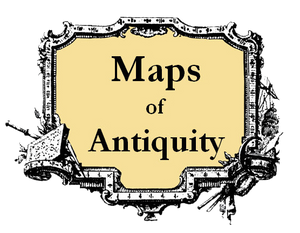How We Describe Antique Map Conditions
Fun fact: the average age of our antique maps is 1855. That makes a large number of our items over 150 years old! When paper gets to be that old, it is rare for it to be in perfect condition (I wish I could get to be 100 years old and still look as good as most of our maps do!). We do our very best to describe the condition of each map accurately, but we realize that some of our industry specific terms can be a bit mysterious. Therefore, we shall endeavor to define our most used condition terms here:
Foxing: The term 'foxing' describes disfiguring small yellow brown spots or blotches on paper. Two main causes are mold and iron contaminants in the paper. Molds feed on the paper itself, as well as any dirt or organic material on it, for example, finger marks, food stains and squashed insects. Tiny metal impurities can be found in paper as a result of the original manufacturing process or from dirt and pollution. Damp conditions encourage mold growth, and will cause iron contaminants to rust. In some cases a conservator may be able to reduce the disfiguring effect of foxing, but in many cases you simply have to accept this old damage. (from this excellent article on the Victoria & Albert Museum website)
Seam separation: This indicates that the paper has torn along a fold. It is quite common for maps with folds to have a small amount of seam separation. Sometimes it occurs at the paper edges, while other times it is only where the folds intersect.
Image transfer: Also known as ghosting, this indicates that the surface of the map was pressed against another map, or the map was folded with the two sides facing each other, and slight traces of the ink transferred to the other page. This causes a ghostly reverse image on the map that almost looks like there is something on the back of the paper.
Surface soil: Some maps and charts have a little grubbiness to the surface of the paper. It could be caused by various things, but soot is a common culprit. It may or may not come off, depending on how established it is on the paper surface. Restoration can often lift this off the map even when our simpler methods of removal have failed, but restoration can be a bit pricey and doesn't make sense for every map.
Toning: Some types of paper change color slightly as they age, based on environmental factors such as sunlight. Maps can be toned only on the edges, or toned throughout the page. Sometimes a folding map will have only a small section that is toned because only that section was exposed to the elements.
Folds as issued: This indicates that the map has always been folded- it was published with the folds. Whether it was folded in a book or atlas, or folded to be pocket-sized for travelers, antique maps often have folds. We do not recommend that antiques be dry mounted to flatten them! Most maps with folds will still look great when framed. The folds give the map character and make it look like an antique- being very flat will make your map that is supposed to have folds look like a reproduction. Dry mounting is not archival because it is not reversible and it will affect the value of the map.
Margin wear/ Edge wear: Small minor tears, paper loss, creases, or other minor wear at the edges of the paper.
Are there other condition terms on our website that you don't recognize? Let us know and we will add them to this list!
